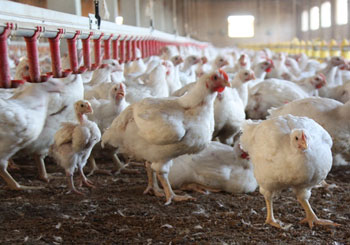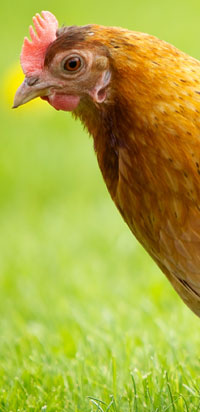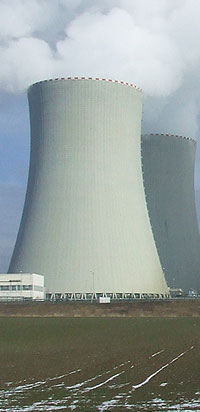
 Recent FDA tests found elevated levels of toxic arsenic compounds in chicken meat eaten by humans, prompting manufacturer Pfizer to withdraw Roxarsone from the market.
Recent FDA tests found elevated levels of toxic arsenic compounds in chicken meat eaten by humans, prompting manufacturer Pfizer to withdraw Roxarsone from the market.
Organic arsenic has been added to livestock feed for decades to promote growth, kill parasites, and make fowl meat pinker. The FDA says the health threat is minimal, but many were surprised to learn arsenic is part of animals’ diet.
Arsenic has been with us — in plain sight — for a long time. It was such a popular murder weapon in the 19th century that scientists made it a priority to develop a test for toxicological evidence of the substance in dead bodies. In the Victorian era arsenic was in everything from wallpaper to health tonics. Yet most people today have never heard of Roxarsone or had any idea that this form of arsenic was purposely put into our food.
I was surprised to learn … that one early justification for adding arsenic to chicken feed was cosmetic. The FDA approved it in the 1950s to make meat look pinker and fresher. That is a fairly cynical attitude toward consumers: saying it's fine to add a potentially poisonous substance into our diet in order to pretty-up food.
Going forward: Pfizer has suspended sales of the arsenic-food additive while it runs further tests. So the question is whether they'll return it to market after those tests. Will the FDA's work lead to only a temporary break in the use of this additive or its actual withdrawal?
Read more about this topic
My reporting focused on the consumer-safety angle: traces of inorganic arsenic that wind up in supermarket chicken and in people’s bodies. I’d like to see more reporting on the other way arsenic-laced feed additives leave the factory farm -- via massive quantities of manure. The poultry industry gets rid of it in two ways: by spreading manure on surrounding farm fields (often at rates too high to be safely absorbed by the land, creating water pollution) and by composting it into fertilizer that is sold as “organic.” The science is pretty clear that the arsenic remnants in chicken manure transform from organic to inorganic pretty quickly. So untold amounts of inorganic arsenic are entering the environment in this way.
Setting it straight: For years, I’ve been reading accounts that stress that the arsenic in poultry additives is organic and thus nontoxic. But evidence has been building for a while that it doesn’t stay organic for long.
I’ll be watching … to see if the other companies that manufacture Roxarsone follows Pfizer’s lead and voluntarily suspend it from the market. The hog industry uses arsenicals as well, so it will be interesting to see whether it gets flack too.
Read more about this topic
| Tweet This Page |










